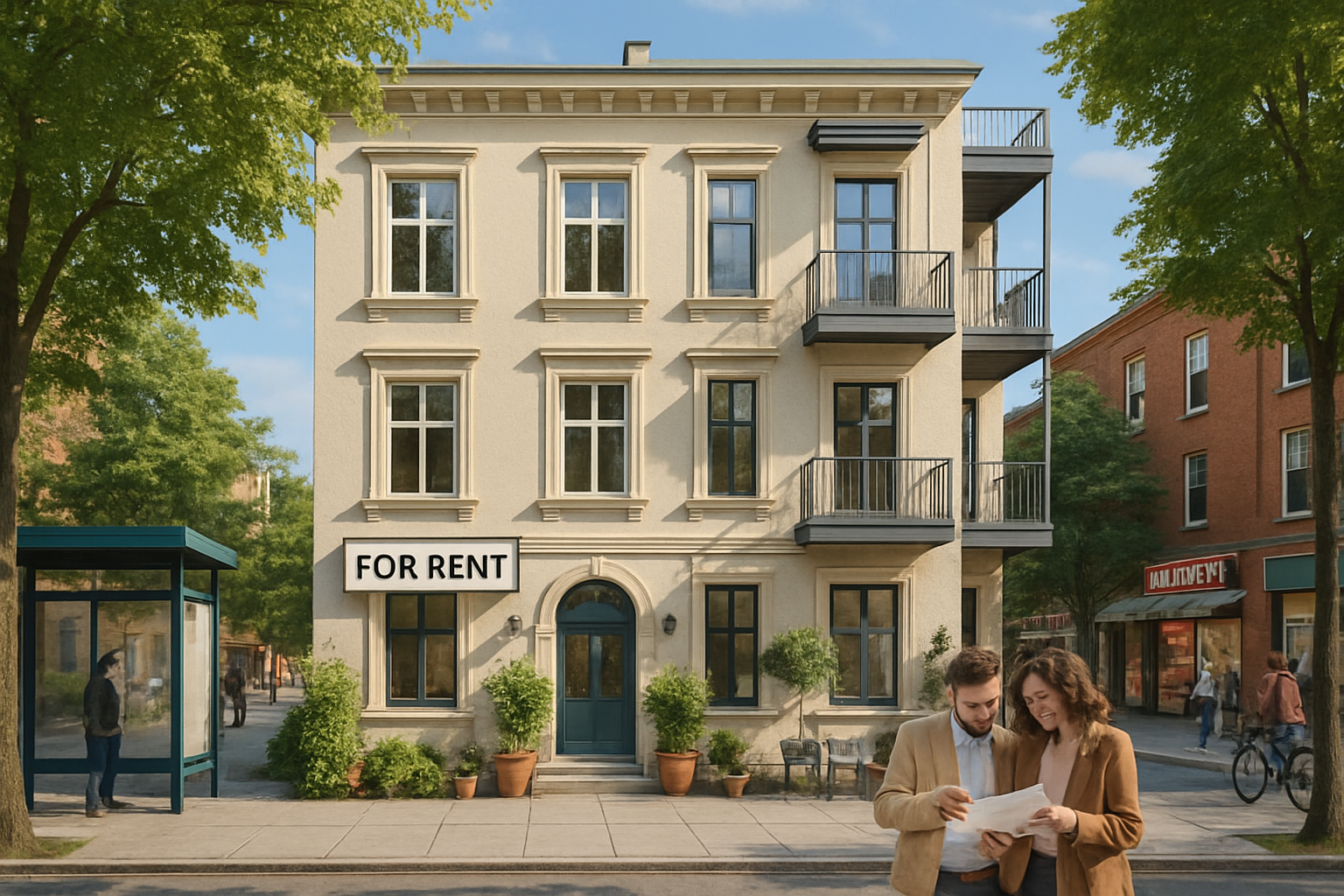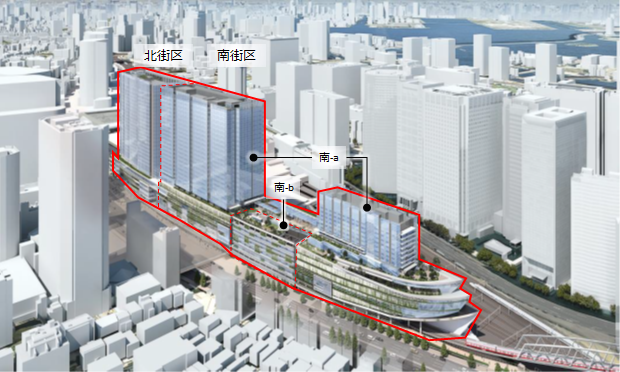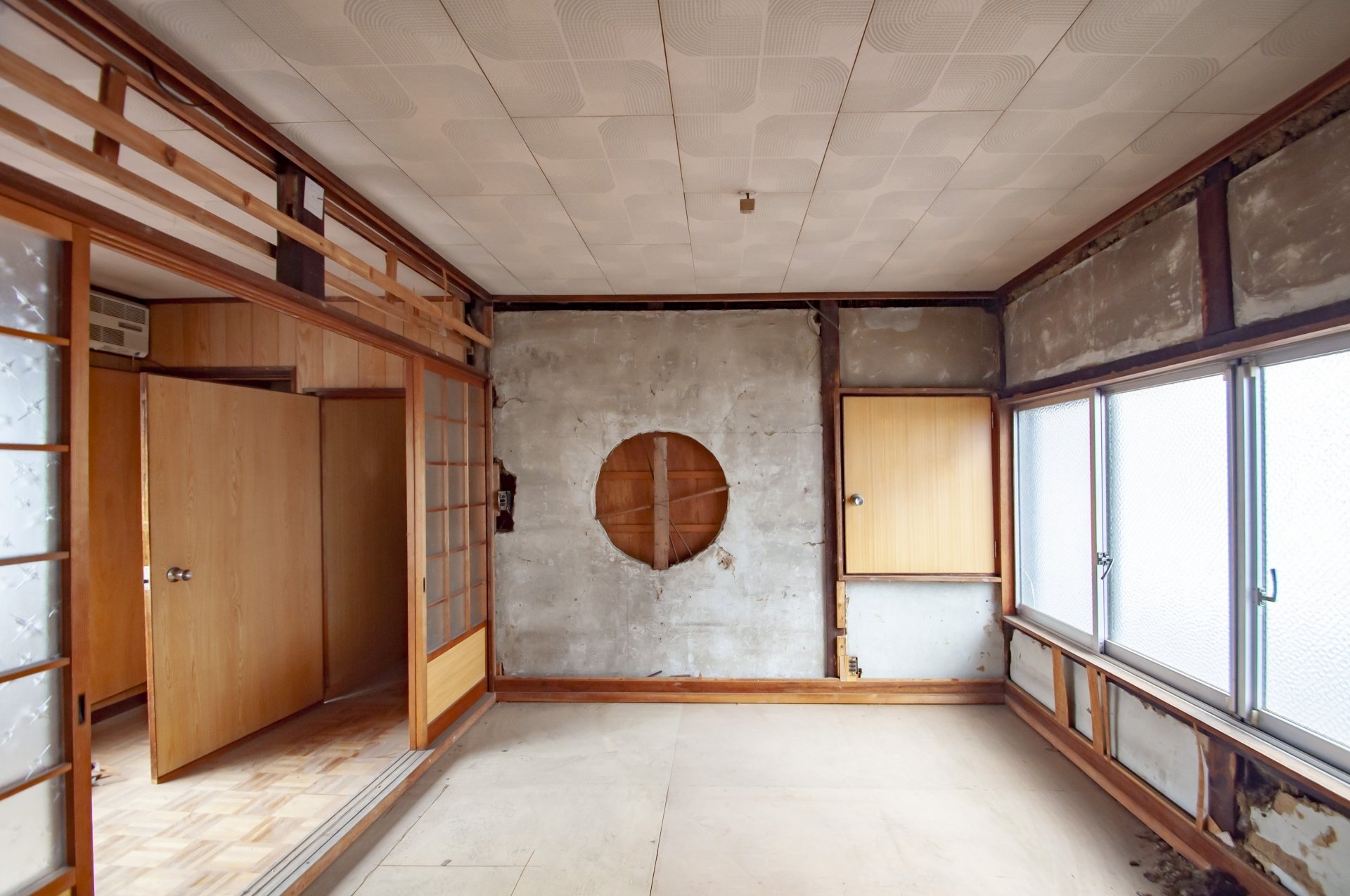In the field of real estate management, we are hearing more and more about "smart locks. While many attractive features are mentioned, such as the convenience of unlocking locks with a smartphone and freedom from the task of handing over keys, it is also true that various hurdles exist in the actual introduction of smart locks. This article explains the practical challenges of introducing smart locks and concrete measures to overcome them from the perspective of a real estate manager.
Many management companies and property owners want to introduce smart locks, but are hesitant to do so. The reasons for this are not only simple technical issues, but also uncertainty about cost recovery and compatibility with property characteristics. On the other hand, many successful cases show that with proper strategy and planning, a return on investment can be realized within 6 months to a year after installation.
Smart locks are not just an IT gadget, but should be viewed as a strategic tool for improving the efficiency and profitability of real estate management. This article provides the information necessary to make a decision to introduce them from a practical aspect.
Business Benefits of Smart Lock Installation
The greatest benefit of implementing smart locks in real estate management is the streamlining of property management operations and the reduction of human costs. The time and effort traditionally required to respond to property inspections and manage keys when tenants move in and out can be drastically reduced. Let's take a look at the actual figures.
Specific examples of operational efficiency improvement
| Type of work | Conventional method | After introduction of smart locks | Reduction effect |
|---|---|---|---|
| Response time for previews | 60 minutes per case (including attendance) | 5 min/job (remote control only) | 55 minutes per case |
| Key delivery | 30 min/job | 0 min/every (not required) | 30 min/occasion |
| Key replacement (when moving out) | 60 minutes/times + 15,000 yen/times | 0 minutes/times + 0 yen/times | 60 minutes/trip + 15,000 yen/trip |
| Lost Key Response | 120 minutes/trip + 15,000 yen/trip | 5 minutes/trip + 0 yen/trip | 115 minutes/times + 15,000 yen/times |
As you can see, in many cases, it is possible to expect to save more than 20 hours of work per month. This effect is particularly noticeable when the number of units managed is large. For example, Leopalace21 reported a reduction of approximately 100,000 hours per year in key-related work by installing smart locks in over 200,000 units in January 2024.
Enhancing Security and Creating Added Value
In addition to improving the efficiency of property management, another major benefit is improved security. The introduction of smart locks enhances the following points
- Prevention of picking damage: no keyholes or reduced use of keyholes
- Reduced risk of key loss: no need to issue or manage physical keys
- Entry/exit history recording: Detection of suspicious activity and use as evidence
- Remote lock confirmation: Prevention of forgetting to lock the door and remote control
In addition, improved convenience for tenants can be a point of differentiation and a basis for rent increases. In fact, INA&Associates has managed a rental apartment in Tokyo that increased its monthly rent by 1,000 yen by installing smart locks, resulting in an annual revenue increase of 120,000 yen.
Practical Hurdles in Installation
However, while there are attractive advantages, there are various barriers to actual implementation. Broadly speaking, there are technical and physical limitations, economic issues, and operational concerns.
Technical and Physical Constraints
The most likely to be faced are compatibility issues with the property's structure and cylinder geometry. As mentioned in the minutes, special keys, knob-integrated cylinders, and bow handles are not compatible in many cases, making it difficult to introduce a unified system for all properties.
Specifically, the following conditions make it difficult to introduce the system:
| Unsupported conditions | Reason | Alternatives |
|---|---|---|
| Cylinder with special shape | Not compatible with general-purpose products | Cylinder replacement (additional cost) |
| Cylinder with integrated knob | No independent thumbturn | Selection of specialized products (limited) |
| Bow handle | Difficult to secure mounting space | Consideration of another type of hardware |
| Apartment building with auto-lock | Compatibility with existing system | Consultation with management company, dedicated system |
In most cases, even cylinder replacement type smart locks are not compatible with existing electric locks or locks with special structures.
Economic Issues
The next major barrier is the cost of installation and operation. The main cost elements are as follows
| Cost Item | Approximate cost | Remarks |
|---|---|---|
| Main unit price | 10,000-50,000 yen/unit | High-function models can cost more than 100,000 yen |
| Installation cost | 10,000 - 30,000 yen/unit | Additional cost for cylinder replacement type |
| System usage fee | Approx. 10,000 yen/month | Cloud management, issuance of one-time passwords, etc. |
| Maintenance | 1,000-5,000 yen per unit per year | Battery replacement, periodic inspection, etc. |
| Failure repair | 5,000 - 20,000 yen per repair | Outside of warranty period |
If smart locks are installed in a property with 100 units, the initial cost alone would be about 3 million yen, and the annual operating cost would be more than 1.2 million yen. The major issue is how to recover this investment.
Operational Concerns
There are several concerns about the actual operation of the system:
- Network dependence: Functionality is limited in properties without a Wi-Fi environment.
- Running out of phone charge: problems due to tenants' phones running out of battery power
- Elderly use: dealing with tenants who are unfamiliar with digital devices
- Operation during disasters: Measures to be taken in the event of power outages or communication failures
In particular, the fact that many functions of smart locks are "network-dependent" is a major limitation for vacant properties without an Internet environment. There is also the practical issue of incompatibility with auto-locking properties.
Key to Successful Introduction: A Realistic Approach
Let's explore a realistic approach based on a case study of a successful smart lock installation that overcame these hurdles.
Selection of properties and a phased approach
Rather than aiming to install smart locks in all properties at once, an effective strategy is to install smart locks in a phased manner, starting with properties that are suitable for smart locks. It is a good idea to start with properties with the following conditions:
- Properties with standard cylinder shape
- Target tenants are highly IT literate (e.g., 20-40 year olds).
- Properties with high inspection frequency and high key delivery costs
- Newly built properties or during major renovations (easier to install)
It is also important to confirm installation conditions in advance. Before installation, check the manufacturer's compatibility list for compatibility with your home's doors and consult a specialist if necessary. In the case of rental housing, it is important to remember to obtain approval from the management company or landlord.
Cost-effective selection and payback plan
Selecting the right product is important to achieve high effectiveness while keeping installation and operating costs low. In particular, you should pay attention to the following points
- Wi-Fi-free type: Highly stable and usable even during power outages and disasters
- Memory type: Can be unlocked with a PIN or card even in an offline environment
- Battery-powered: No wiring work required, low installation costs, and works even in the event of a disaster
There are two main models for return on investment:
-
Business efficiency model: Payback in reduced labor and lock replacement costs
-
Property value enhancement model: Recovery through additional rent
In actual implementation planning, a hybrid model combining the two is effective.
Measures against operational risks
Key points to mitigate operational concerns are as follows
- Securing multiple unlocking methods: smartphone, PIN, card, physical key, etc.
- Selection of battery-powered products: continue operation even during power outages (regular check of battery level)
- PIN storage in the unit: access to and from the unit even in an offline environment
- Resident education: Careful explanation of usage and confirmation of emergency response
Battery-powered smart locks are particularly effective as a disaster countermeasure. They are unaffected by power outages and can be unlocked using the PIN number or card information stored in the main unit, reducing the risk of being locked in or locked out in the event of a disaster.
Case Studies and ROI Analysis
Let's analyze the return on investment (ROI) from the case studies.
Successful case 1: Management operation efficiency improvement type (mid-size management company)
| Item | Details |
|---|---|
| Scale of implementation | 100 units |
| Initial investment | 2 million yen (20,000 yen/unit) |
| Annual savings | 1.5 million yen (labor cost and key replacement cost) |
| Payback period | Approx. 1 year and 4 months |
| Main effects | Reduction of time required for previewing (20 hours per month) and handling of lost keys (15 cases per year) |
In this case, the company achieved particularly significant results in streamlining the handling of previews and key management. Staff time was reallocated to other tasks, contributing to improved service quality.
Successful Case 2: Property Value Enhancement (Private Investor)
| Item | Details |
|---|---|
| Scale of introduction | 10 units |
| Initial investment | 300,000 yen (30,000 yen/unit) |
| Annual revenue increase | 120,000 yen (rent 1,000 yen/month extra) |
| Payback period | Approx. 30 months |
| Tenant evaluation | Highly evaluated as "convenient because I don't have to carry a physical key". |
In this case, by clearly setting smart locks as a point of differentiation and setting rents accordingly, the company succeeded in achieving a return on investment in a short period of time. It seems that the tenant support was particularly high among younger tenants.
Points to Learn from Failures
On the other hand, there are points to be learned from cases that did not go well:
- Insufficient confirmation of cylinder shape: Incompatibility was discovered after installation, resulting in additional costs.
- Insufficient explanation to tenants: Insufficient understanding of how to operate the system, resulting in an increase in support support support
- Mistake in assuming the communication environment: Unable to use remote functions due to unstable Wi-Fi environment
- Miscalculation of cost-effectiveness: Rent increases were not accepted by the market, resulting in vacancies
These examples illustrate the importance of detailed advance planning and understanding of property characteristics. In particular, the investment payback forecast needs to be realistically set based on the actual market environment.
Specific Smart Lock Selection Points
Product selection is extremely important when making the decision to install a smart lock. The following is an explanation of the main selection points.
Selection by Installation Method
Smart locks can be divided into three types according to installation method, each with its own characteristics:
| Installation type | Characteristics | Suitable properties |
|---|---|---|
| Drilled hole type | High security, rich in features Construction required, may not be available for rent |
Owned property, newly built property |
| Cylinder replacement type | Easy installation, little change in appearance Limited models, limited functions |
Property with standard cylinder |
| Paste type | Easy installation, can be rented Low security and durability |
Rental properties, for trial installation |
For rental properties, it is important to select a type that can be easily restored to its original condition when the tenant moves out. Especially, the stick-on type and the cylinder replacement type that fits the door shape are suitable.
Selection by Unlocking Method
The unlocking method is also an important selection point:
| Unlocking method | Characteristics | Suitable case |
|---|---|---|
| Smartphone-operated type | Remote control possible, history check Dependent on smartphone and communication |
Properties for young people |
| PIN type | Easy operation, good battery life Risk of number leakage |
For a wide range of age groups |
| Biometric authentication type | High security, no key required Expensive, environmental impact |
High grade properties |
| Multi-device type | Situational unlocking Configuration complexity |
Multiple occupancy properties |
Especially in real estate management, the multi-device type offers operational flexibility. Multiple means of unlocking the door, such as a smartphone, PIN, IC card, or physical key, can be used in a variety of situations.
Selection by Communication Method
The communication environment is also an important point to consider:
| Communication method | Features | Points to note |
|---|---|---|
| Wi-Fi required | Multifunctional, remote control Dependent on communication environment |
Requires a good communication environment |
| Bluetooth direct type | Short distance operation possible Remote operation limited |
Requires smartphone proximity |
| Offline type | No communication environment required, stable operation Limited functions |
Limited remote management |
Especially when disaster countermeasures are taken into consideration, products with offline functions that do not require Wi-Fi are safer. Battery-operated type that can store PIN and card information in the main unit can be unlocked during power outages or network failures.
Best Practices for Installation and Operation
Finally, here are some practical tips for smart lock installation and operation.
Preparation before installation
- Property diagnosis: Check the door and cylinder shape of each property and check for compatibility.
- Cost estimation: Clarify initial and operational costs and develop an ROI plan
- Operation plan: Establish operational flow, including internal viewing methods, move-in/out procedures, emergency response, etc.
- Resident briefing materials: Prepare materials that summarize operation methods and benefits in an easy-to-understand manner
- Small start: Test installation in a few units to identify issues before expanding
Of particular importance is the prior confirmation of the cylinder shape. Many smart lock manufacturers provide a cylinder check tool on their websites, so be sure to check it before installation.
Establish an operational system
- Clarify who is in charge: Assign a smart lock administrator and centrally manage all smart locks.
- Support system: Establish a contact point for tenant inquiries.
- Periodic maintenance: Plan for periodic maintenance such as battery replacement
- Security measures: Periodic PIN changes, check system for usage history
- Emergency response: Secure alternative means of communication in the event of a power outage or communication failure.
In terms of operation, particular attention should be paid to the issue of network dependence, which may limit the use of the system to respond to room tours in vacant rooms without a Wi-Fi environment, since remote control and history functions are not available.
Conclusion
While the introduction of smart locks in real estate management has many advantages, there are also practical hurdles. The following points are particularly important
- Compatibility with property characteristics: Confirm compatibility with cylinder shape and property structure
- Phased approach: realistic plan to install sequentially starting with compatible properties
- Payback plan: Maximize ROI by improving both operational efficiency and property value
- Operational risk measures: Safeguards such as multiple unlocking systems, offline support, etc.
With proper planning and a realistic approach, smart locks can make a significant contribution to improving the efficiency and profitability of real estate management. In particular, the greater the number of units under management, the greater the efficiency of property inspections and the reduction in key management costs.
While it is not realistic to implement smart locks uniformly in all properties, selective implementation according to property characteristics and value-added creation with an eye on tenant needs will make smart locks a powerful tool for real estate management.
Frequently Asked Questions
Q1: Is it possible to install smart locks in rental properties?
A: Yes, it is possible . In particular, the stick-on type and the cylinder replacement type can be installed in rental properties because they can be restored to their original state when the tenants vacate the property. However, be sure to obtain approval from the management company or landlord. If the cylinder needs to be replaced, the existing cylinder can be stored and replaced again when the tenant moves out.
Q2: Can SmartLock be used during power outages or network failures?
A: Support varies by product . Battery-powered SmartLocks are not affected by power outages, but power-connected SmartLocks will stop working in the event of a power outage if there is no emergency power supply. Also, network dependence differs depending on the model. If the lock is a type that stores PIN and card information in the main unit, it can be used in an offline environment. When installing the system, we recommend choosing a product that can be backed up and unlocked with a physical key in consideration of emergency response.
Q3: Is it possible to collect additional fees from tenants?
A: Yes , but it is important to consider market conditions and tenant needs. The main options are
- Add the cost to the rent (about 500 yen to 1,200 yen per month)
- Offered as an optional service (as a monthly fee)
- Appealing as an added value (differentiation by deferring rent)
In some actual cases, we have succeeded in adding 1,000 yen per month to the rent. The key to acceptance is to appeal the point that there is no need to worry about losing keys or having to replace locks, and the convenience of locking and unlocking the door with a smartphone.
Q4: What kind of cylinders cannot be installed?
A: Many smart locks cannot be installed with the following types of cylinders and door shapes
- Locks with special construction
- Double-locking type with keyholes on the top and bottom
- Designs with an integrated lever handle and cylinder
- Doors with extremely thin or thick door thicknesses
- Doors with a bow handle
Before installation, it is recommended to check the compatibility with your home door in the manufacturer's compatibility chart. Prior confirmation is essential, especially for older properties or doors with special shapes.
Q5: How can security be ensured during previews?
A: The one-time password feature is important. This allows for the following security measures
- Issuance of passwords that are valid only once or for a limited time
- Recording and checking access history
- Detection and notification of abnormal access
- Immediate deactivation of privileges after viewing
SmartLock in conjunction with a cloud management system can also be linked to a viewing reservation system to automatically issue and manage one-time passwords.
Reference Information
- Ministry of Land, Infrastructure, Transport and Tourism: Act on Appropriateness of Rental Housing Management Business, etc.
- Rental Housing Management Association of Japan: Guidelines for Rental Housing Management
- Ministry of Internal Affairs and Communications: Appropriate Management of IoT Devices, etc.
If you are considering installing smart locks in your own properties, we recommend that you first conduct a trial installation in a small number of properties to verify the effectiveness of the system. Product selection and operational planning tailored to the characteristics of the property are the keys to success in smart lock implementation. Please feel free to contact INA&Associates if you have any questions or would like to discuss the details.

Daisuke Inazawa
Representative Director of INA&Associates Inc. Based in Osaka, Tokyo, and Kanagawa, he is engaged in real estate sales, leasing, and management. He provides services based on his extensive experience in the real estate industry. Based on the philosophy that “human resources are a company's most important asset,” he places great importance on human resource development. He continues to take on the challenge of creating sustainable corporate value.

.png)













